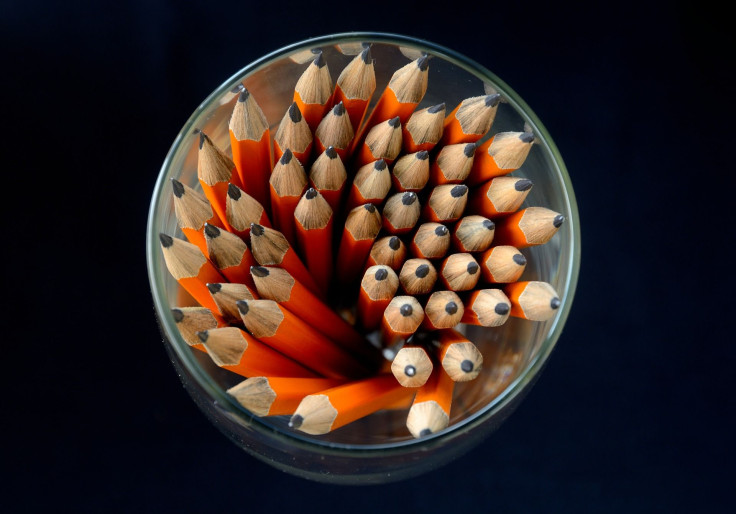We Can't Draw Perfect Circles: Visual Cortex Recognizes Them, But Coordination And Muscle Control Don't Always Work

Whether or not you’re an artist, drawing a perfect circle may be an unsurpassable feat in your mind, something you may not even bother trying to practice. That’s because our ability to spot imperfections in drawings — and correct them — can get us as close to what we need as possible.
But understanding why exactly we can’t simply draw a perfect circle in one stroke involves knowing how our brain recognizes shapes and sizes, and how it attempts to coordinate muscle and arm movement in order to draw. One skill humans possess due to evolution is the ability to recognize friend from foe, such as avoiding poisonous berries and going for the good ones, or noticing a predator versus an ally. Our ability to differentiate between “correct” or “incorrect” shapes, then, helps us draw and replicate things on paper. This ability is found in the visual cortex in our brains, and it’s often pretty accurate.
“The majority of us don’t have a lot of practice in drawing, but we all do have a lot of practice in identifying complex stimuli,” Rebecca Chamberlain, a postdoctoral researcher at the KU Leuven in Belgium, told Brain Decoder. “Noticing subtle differences in shape and symmetry seems to be quite a fundamental property of our visual system.”
But the problem occurs when the brain is unable to coordinate the visual cortex with the muscle control used to draw, which is associated with a completely different part of the brain. Because our brains will attempt to simplify the arm movement necessary to draw a circle, our hands fall short and our drawing results in a lopsided circle.
“The circle is one of the hardest shapes to control,” Natalia Dounskaia, associate professor of kinesiology at Arizona State University, told Brain Decoder. “During most arm movements, the shoulder is used as the handle and the elbow trails behind.”
Taking the question to another level, even if our visual and muscle coordination worked perfectly together, and our drawing skills were on point — it would be impossible to draw a “perfect” circle. That’s because, when it comes down to physics, a perfect physical circle in the world of matter doesn’t really exist (but this can be debated).
As Sulimon Sattari, a graduate student in chaos theory, explains on Quora, “it’s impossible to construct a perfect circle that is made of matter… To really ‘prove’ that something is a circle, you would have to be abe to measure its curvature in all places simultaneously up to infinite accuracy.” We can draw a representation of a perfect circle using a compass, but a perfect circle may only exist in theory — or in mathematics.
That being said, it’s true that you can train your brain and hand-eye coordination to draw a representation of a “perfect” circle. Whether you want to spend a good chunk of your time doing that, however, is up to you.



























